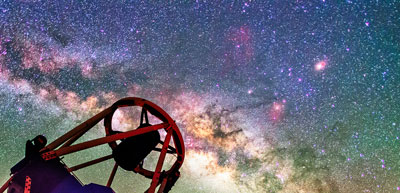
The Liverpool Telescope. ©2017 Daniel López/IAC
The PATT and JMU Time Allocation Committees (TACs) have issued Calls For Proposals to observe with the LT in Semester 2025A, which runs from 1st January 2025 to 31st August 2025 inclusive.
As always, you may also apply for Reactive Time and Priority Z Time outside of these semester-based applications, at any time throughout the year.
Please note that for both TACs we are now using the new browser-based proposal submission system on the New Robotic Telescope (NRT) website. Please click on the Submit Proposal links below, or on the "Proposal Submission" link on the sidebar at left, and follow the instructions. You will need to register an account if you don't have one already. Any queries with this system should be addressed to nrt@ljmu.ac.uk.
PATT Applications
 Full PATT 2025A Call for Proposals [97kB PDF]
Full PATT 2025A Call for Proposals [97kB PDF]
|
Please submit proposal by |
|
Total allocation time available, after deductions for Reactive Time and pre-allocations:
- 300 hours split roughly 50-50 between priority A and B
- 100 hours priority C (backup)
Applications are particularly encouraged for brighter sky conditions, which are typically less subscribed.
PATT accepts proposals from Principal Investigators (PIs) based in the UK. Non-UK PIs who are not eligible for CAT, OPTICON or CCI time may also apply through PATT.
JMU Applications
 Full 2024B JMU Call for Proposals [92kB PDF]
Full 2024B JMU Call for Proposals [92kB PDF]
|
Please submit proposal by |
|
Total allocation time available, after deductions for Reactive Time and pre-allocations:
- 316 hours split roughly 50-50 between priority A and B
- 100 hours priority C (backup)
Applications are particularly encouraged for brighter sky conditions, which are typically less subscribed.
The internal JMU TAG accepts proposals from Principal Investigators (PIs) from Liverpool John Moores University's Astrophysics Research Institute.


